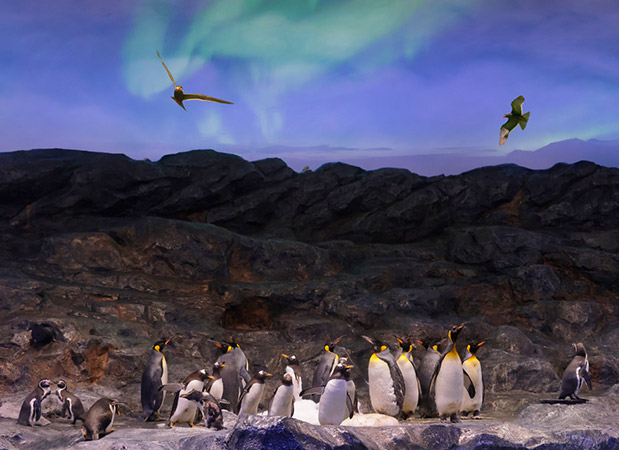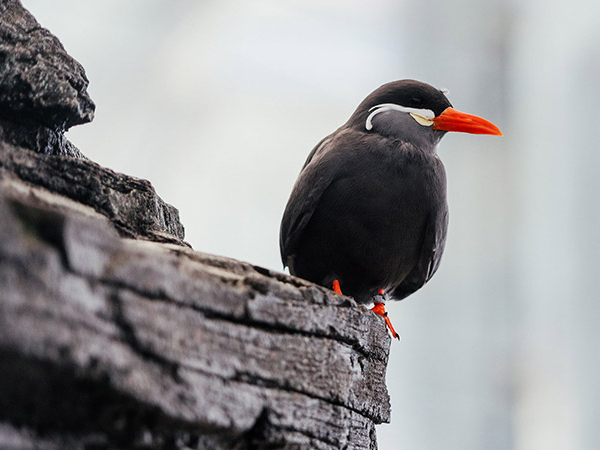Inca Terns fly to Singapore
This Spring, 6 Inca terns born at the Oceanário de Lisboa “flew” to a new habitat: the brand-new bird park, Bird Paradise, in Singapore.
This Spring, 6 Inca terns born at the Oceanário de Lisboa “flew” to a new habitat: the brand-new bird park, Bird Paradise, in Singapore.
The transfer of species between institutions plays a fundamental role in conservation once it allows an increase in the knowledge of these species. Additionally, the breeding and monitoring programmes of EAZA (European Association of Zoos and Aquaria) contribute to the good management of ex-situ populations.
Inca terns (Larosterna inca) are seabirds that occur on the East Pacific coast - and in the Antarctic habitat of Oceanário de Lisboa. They have two white, curved, moustache-like feathers near the beak that give them a majestic look, while juveniles, whave dark beaks and feet, which will turn red as they growThe conservation status of this species, assessed in 2018, is classified as 'Near Threatened' on the IUCN Red List of Threatened Species, with a decreasing population due to climatic phenomena, habitat degradation, and bycatch.

Oceanário de Lisboa has successfully bred several Inca terns over the years. "Each animal at Oceanário is carefully monitored from its birth, and the biometric records, such as size and weight variations, are uploaded onto a platform, contributing to the analysis of each particular bird and to the study of this species at a global level.", assures Ana Ferreira, Science and Conservation Officer at Oceanário de Lisboa. "Zoos and aquariums register and may share data of the animals at their care in specific programs, which allows, in this case, that when the terns arrive at their new "home", the teams already have all the history and relevant data of each individual, guaranteeing the continuity of the welfare evaluation and the data collection work", explains Ana Ferreira.
The three young-adult couples "migrated" to Singapore with the mission to be ambassadors for their species, raising visitors' awareness of ecosystem conservation.

